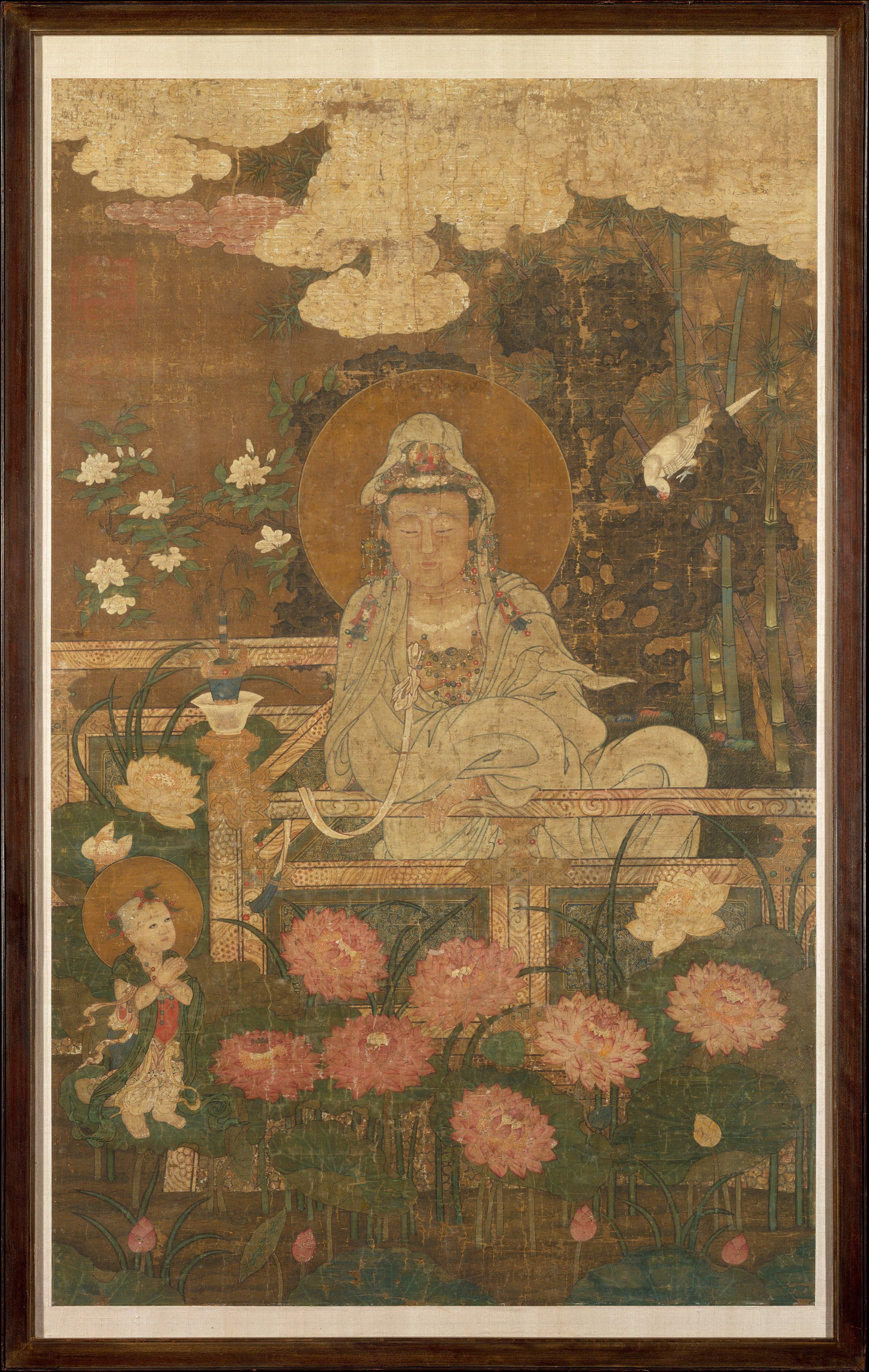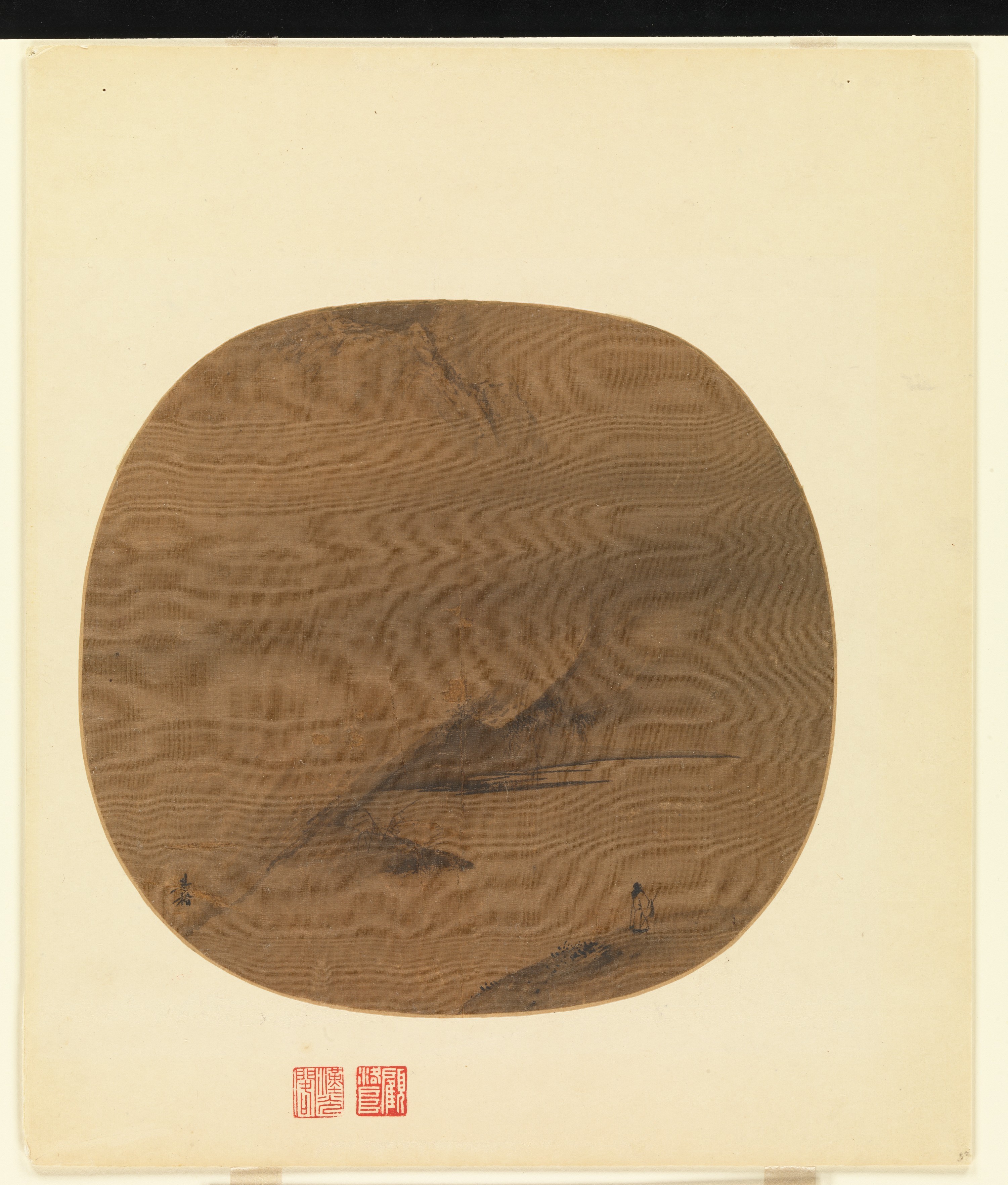Pivotal events for the Tradition: Diffusion China
Although there are reports of Buddhists in China as early as the 3rd century BCE, Buddhism was not actively propagated there until the early centuries of the Common Era.
Buddhism in China during the late Han dynasty (206 BCE-221 CE) was deeply colored with magical practices, which made it compatible with Daoism (see Daoism Module).
Nirvana
became a kind of Immortality. Buddhism added notions like the theory of
Karman
the values of charity and compassion and the need to suppress the passions. Until the end of the Han dynasty there was a virtual symbiosis between Daoism and Buddhism, both religions advocated similar ascetic practices, like meditation, as a means of attaining religious fulfillment. Moreover, the first translations of Buddhist
Sutras
into Chinese utilized a Daoist vocabulary to make them intelligible to the Chinese.
After the Han period Buddhist monks were often used by non-Chinese rulers in the north of China for their political-military counsel and their skill in magic. At the same time in the south Buddhism penetrated the philosophical and literary circles of the gentry.
One of the most important contributions to the growth of Buddhism in China the 5th century was the work of translation, out of which ultimately was born the Chinese Mahayana Canon, an incredible large collection comprising Sutras, treatise, monastic regulation and other works written in Chinese from all Buddhist traditions of Far East Asia (Tibet excluded).
During the 5th and 6th centuries CE, Buddhist schools from India were established in China and new, specifically Chinese schools were formed. Buddhism was a powerful intellectual force in China; monastic establishments proliferated; and Buddhism became established among the peasantry.
The golden age of Buddhism in China occurred during the Tang dynasty (618-907). Although the Tang emperors were usually Daoists themselves they favored Buddhism which had become extremely popular. Under the Tang the government extended its control over the monasteries and the ordination and legal status of monks.
During this period several Chinese schools developed their own distinctive approaches , systematized the vast body of Buddhist texts and teachings, and took under jurisdiction huge amount of land. However Buddhism was never able to replace Daoism and Confucianism and in 845 the emperor Wuzong began a major persecution. According to records, 4,600 Buddhist temples and 40,000 shrines were destroyed, and 260,500 monks and nuns were forced to return to lay life.
Buddhism in China never recovered completely from the great persecution of 845. On one hand, Buddhism retained its identity as Buddhism and generated new forms of expression, On the other hand, Buddhism coalesced with the Confucian and Daoist traditions to form a complex multireligious ethos within which all three traditions were more or less comfortably encompassed (see Daoism Module p. 6).
The schools that retained the greatest vitality in China after the Tang were the Chan school (better known in the West by its Japanese name, Zen), which was noted for its emphasis on frugality and meditation, and the Jingtu (Pure Land) tradition, which emphasized Buddhist devotion. The former school was most influential among the cultured elite especially through the arts. The Pure Land tradition was most influential among the population as a whole and was sometimes associated with secret societies and peasant uprisings.
A reform movement aimed at revitalizing the Chinese Buddhist tradition and adapting it to modern conditions took shape during the early 20th century. However during the Cultural Revolution (especially 1966–69), Buddhist temples and monasteries suffered massive destruction. After 1976 the Chinese government pursued a more tolerant policy, and Buddhism began to show new life, to what extent, however, is difficult to determine.
Analysis of Sources
Buddhism expansion in China.
See above Pivotal events for the Tradition: Diffusion China
Source n°2
Chinese Buddhist Schools
The variegate flourishing of different schools in China has its roots in two causes: first, the Chinese approach to the sacred, instead of a single overarching religious truth, had always preferred multiple worldviews and religious viewpoints, stemming from indigenous (Confucianism and Daoism) or not (Buddhism) traditions (see Daoism Module p. 6).
Secondly, Buddhism itself, especially in the
Mahayana
movement, allowed various teachings and interpretations of the core Buddhist principles, through the hermeneutic devices of the
Skillful Means
(see Buddhist module I p. 6): various Buddhist schools hold that their own teaching were the ultimate truth, but at the same time considered other teachings not as untruthful ones, but as preliminary steps toward
Enlightenment
.
The Chinese schools reflects how Buddhism adapted itself to the cultural environment of China:
Tientai School: it preaches that all sentient beings are inherently enlightened. It was one of the first schools to systematize all the different Buddhist teachings on a coherent and hierarchical framework, with the
Lotus Sutra
(see Buddhist module I sec. 6) at his apex . This school laid the theological foundations for many subsequent Buddhist schools in East Asia.
Huayen School: it preaches that since every phenomenon is interconnected and interdependent, the tiniest particles reflect the whole cosmos. From a single phenomena the practitioner can access to the inner nature of everything, and meditating to its pristine
Voidness
, can reach Enlightenment.
Zhenyan: this school belongs to the
Vajrayana
tradition (see Buddhist Module I sec. 7) and as a such preach the unity of the Absolute, represented by the Buddha Vairocana, with the Relative (reality) and the methods of activating this pristine union by means of rituals that involve also the body and emotions.
Chan: see Analysis of Source 3:
Jingtu School: this school preaches that , following the Buddhism tenet of impermanence and decaying of everything, the present era is too degenerate to achieve Enlightenment, therefore the only way is to have faith in
the Supramundane Buddha
Amithaba (cin. Amituo) who will save all sentient beings, creating for them a paradise in which be reborn (see Buddhist module I sec. 6).
In conclusion, almost all Chinese Buddhism reflects a more positive attitude towards the phenomenal world, seen as inherently enlightened and not as a place distinct from
Nirvana
, but as a place in which can be lived as Nirvana, as Chan preaches. Jingtu school can be seen as a exception, and in fact the idea of degenerated times often triggered peasants' revolts, but in general, Chinese Buddhism, especially in its popular practices, was this-wordily oriented. All these schools have been transmitted in Japan (see sec. 4)
Source n°3
Excerpts from the "Record of Linji"
Glossary: Followers of the way: followers of the way of Buddha
The Chan school is one of the most original creation of Chinese Buddhism. Starting from the Tientai's tenets that man is inherently enlightened, it preaches that illumination is a sudden awaking to the truth that results in a total spontaneity and ultimate freedom. This emphasis on natural spontaneity reveals the influence of Daoist ideas of living through the flow of the Dao, such as the concept of Wu-wei (see Daoism Module sec. 3).
The first excerpts push towards the discovery the inner buddhahood in everyday activities, meditating on the inner self which is essentially enlightened, without longing for something from outside. The second excerpts shows the extreme ideal of frugality that is essential in living through the Truth of
Impermanence
, an aspect of the Chan practices that helped it to survive the persecution 845. Finally the third excerpt shows the paradoxical use of language in Chan: speaking from the ultimate Truth of Voidness and Impermanence, there is even no thing such a Buddha. These shocking statements aims to prevent the disciples to grasp and crave for Enlightenment itself!
Source 4:
Guanyin by a Lotus Pond
Guanyin is depicted in an idyllic setting setting and is shown being worshiped by the child prodigy Sudana. Guanyin is traditionally the Bodhisattva (see Buddhism Module I p. 6) that assists the Buddha Amithaba (see above) and is characterized by a compassionate will to save the sentient beings, not only guiding them towards Enlightenment, but providing also general solace from any physical and psychological suffering. The Guanyin cult in China reached its peak of popularity in the 16th century. By that time, Guanyin had acquired a marked feminine appearance, gaining an image of a maternal source of unconditional love.
The devotion to this kind of deity exemplifies the more popular side of Chinese Buddhism, while Chan represent the loftier and more spiritually refined side.
Source 5:
Poet Strolling by a Marshy Bank
Liang Kai was a famous artist, but he relinquished that prestigious position to live and paint at a Chan Buddhist temple. This painting portraits a still landscape, with a huge cliff, almost covered by clouds, towering on a river. Man is not but a little and solitary figure on the left, taking refuge in nature as the best place to meditate on the illusory world before him. This small landscape well exemplifies the Chan style of ink painting: fast and few brushstrokes create a painting which is mainly constituted by the white color, indicating the Voidness of the world. Man is just a little and organic part of Nature (influence of Daoism) and can reach Enlightenment through still and simple activity within Nature. This painting not only conveys a deep spirituality, but its creation itself was deemed as a way of spiritual progress through the path of Chan Buddhism.
Link to other Modules:
Module on Medieval Spain and Sicily
Module on religious diversity in roman empire
Buddhism Module I sec. 6 and 7
Daoism Module sec. 3 and 6









